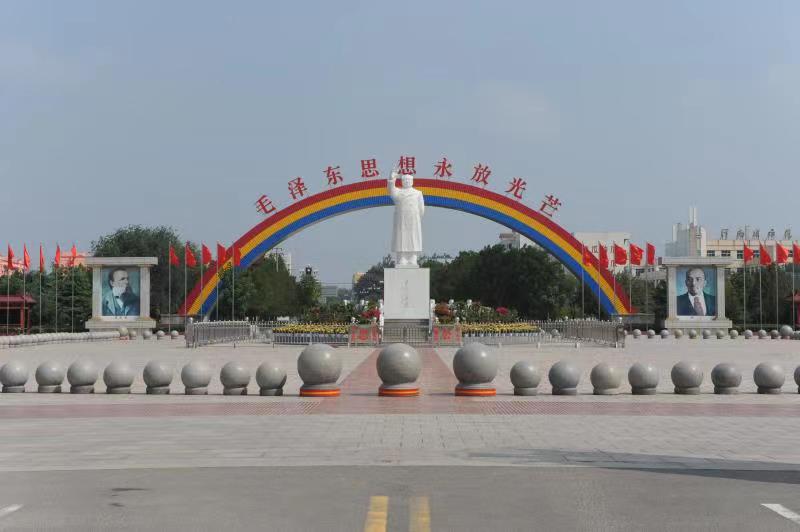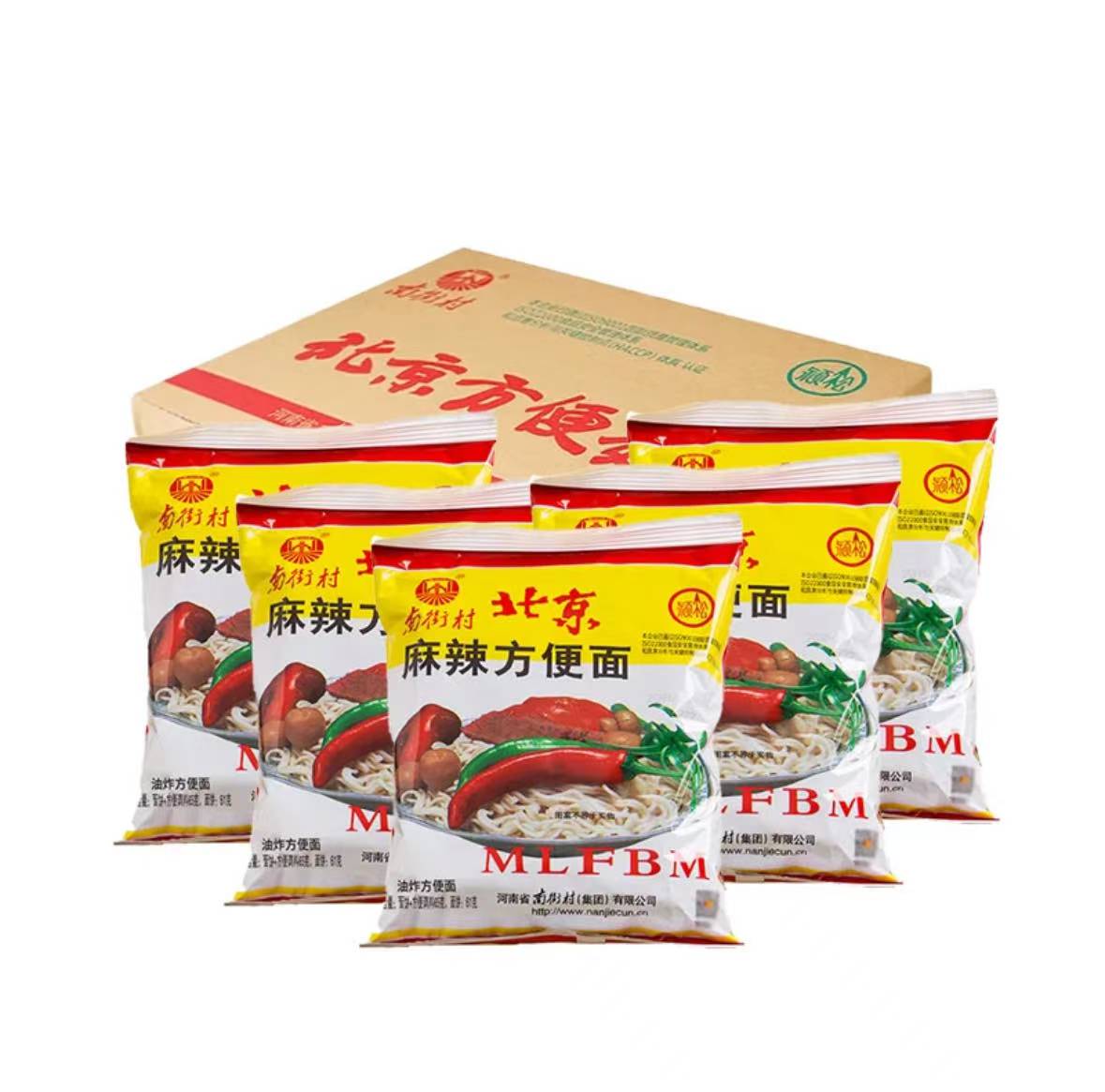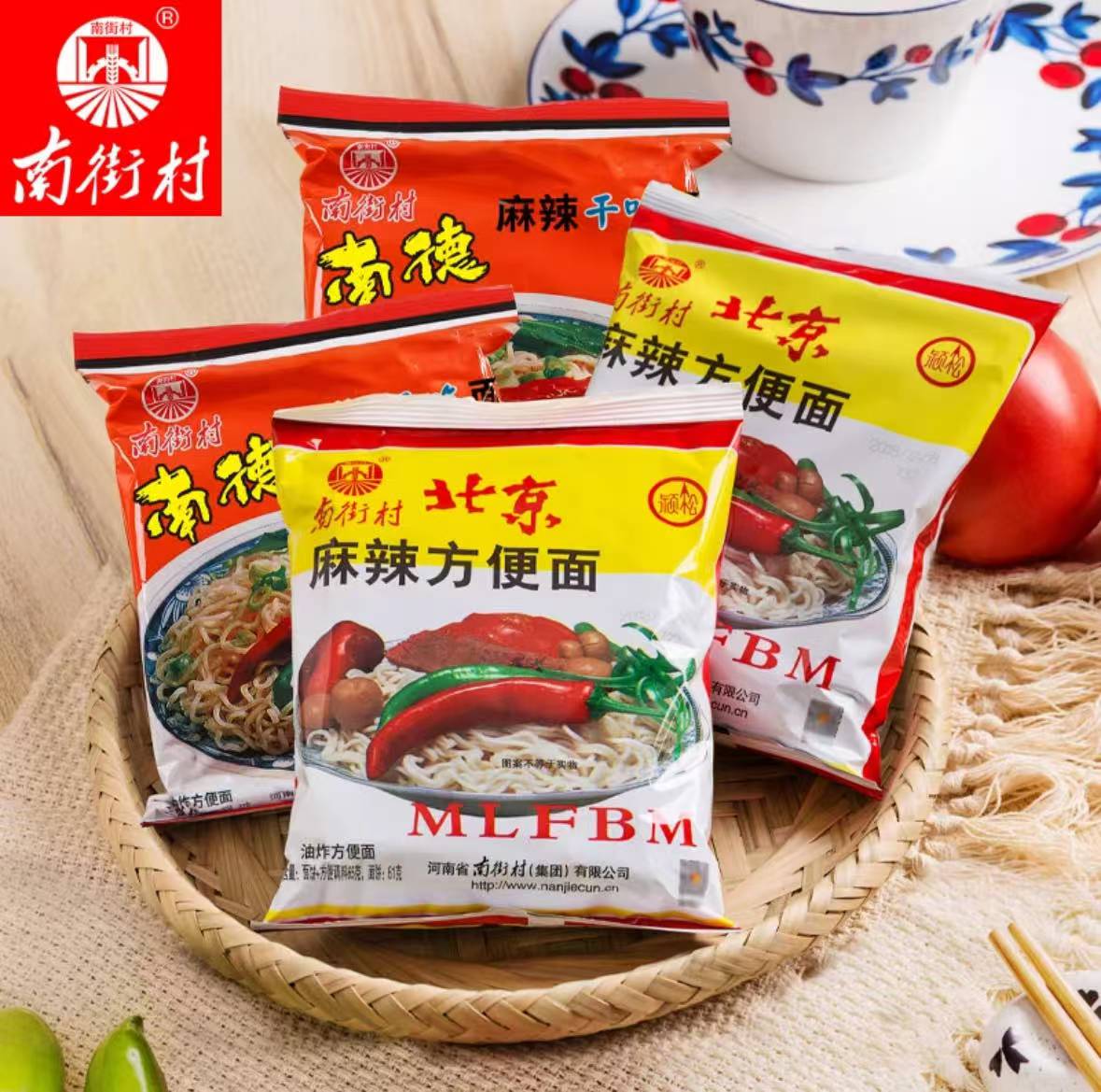You’ve heard of Beijing Duck, Beijing opera, even Beijing traffic jams… but what about the Beijing Instant Noodle? Here’s the twist: This iconic and classic product isn’t from Beijing at all. In this blog, we’ll unpack everything about this legendary product born in the Nanjiecun Collective Village.


Table of Contents
WHAT IS THE BEIJING INSTANT NOODLE?
In the 1980s, China underwent a period of capitalist reform and opening up under the leadership of Deng Xiaoping. In Nanjie Village, located in Linying County, Luohe City, Henan Province, the local Party secretary sought to lift the village out of poverty by transforming it into a collective economic unit. This involved establishing numerous factories and vigorously developing the local economy.
Nanjie Village’s industrial journey began with a flour mill producing basic flour products. In 1989, the Linying County Materials Company partnered with its flour customer, the Jinsong Pastry Factory from Beijing, to establish a second branch of the factory in Nanjie Village. This new facility started producing instant noodles and pastries using techniques from Beijing.
The agreement between the two parties was handwritten on two sheets of draft paper. Party A, the Jinsong Pastry Factory in Beijing, agreed to transfer all relevant production techniques for instant noodles and pastries to Party B, Nanjie Village. In return, Nanjie Village would pay 20,000 yuan annually to the Beijing factory for the first three years as a technology licensing fee, with future payments to be renegotiated.
The first instant noodle brand was named “Yingsong” – a blend of “Ying” from Linying and “Song” from Jinsong.
As the technology originated from Beijing, the packaging proudly featured the prestigious label “Beijing Instant Noodles”. In the years that followed, Nanjie Village continued to thrive. Meanwhile, the Jinsong Pastry Factory in Beijing eventually closed down in 2003 due to poor management. Remarkably, however, the Beijing instant noodles have endured and are still in production today.


WHAT DOES THE BEIJING INSTANT NOODLE LOOK LIKE?
For over three decades, the packaging of Beijing Instant Noodles has remained largely unchanged.
The design is dominated by a bold red and yellow colour scheme. The top section is a bright yellow, displaying the characters “Nanjiecun” and “Beijing” in prominent red, with the brand’s logo positioned alongside. The red not only grabs attention but also hints at the noodle’s signature spicy flavour.
At the centre of the packaging is an image of the noodles served in a bowl, topped with vibrant red and green chillies and a sprinkling of peanuts. This visually appealing garnish serves both to whet the appetite and to reinforce the product’s spicy identity.
Beneath the image, the letters “MLFBM” appear in large red font – the initials of the Chinese name “Ma La Fang Bian Mian”, meaning “Spicy Instant Noodles”. Below that is the net weight information: “65g (61g noodles + 4g seasoning)”. The top and bottom edges are bordered in red, giving the package a neat and consistent appearance.
The simple, utilitarian design of Beijing Instant Noodles reflects the spirit of its time and the collectivist philosophy of Nanjiecun. It was made to be practical and affordable rather than flashy or commercial. Today, this packaging stirs a sense of nostalgia among China’s Gen Z, reminding many of the carefree days of their childhood.


HOW MUCH IS THE BEIJING INSTANT NOODLE?
One of the most telling reflections of Nanjiecun’s identity as a communist collective village lies in the pricing of its Beijing Instant Noodles.
When it was first introduced over 30 years ago, a packet was priced at 0.5 CNY. While not exactly cheap at the time, it was still considered a high-quality snack that students could afford.
Fast forward more than three decades, and the prices of staple foods like rice, flour, and cooking oil have increased five to eightfold. So, how much do you think a packet of Beijing Instant Noodles costs today?
The answer might surprise you – it’s still around 1 CNY (Around 0.14 USD) per packet. In fact, if you buy in bulk, it can cost even less. That’s a price increase of less than double in over 30 years!
HOW TO EAT THE BEIJING INSTANT NOODLE?
The simplest and most familiar way to enjoy instant noodles is, of course, to cook them.
However, in China, there’s a rather distinctive method for eating Beijing Instant Noodles – eating them dry, crushed and seasoned.
To do this, keep the noodles sealed in their packaging. Gently crush the block of noodles with your hands until it breaks into small bite-sized pieces. Then, open the packet, sprinkle the seasoning over the crushed noodles, and give it a little shake so the flavouring spreads evenly. You can then eat the crunchy, well-seasoned noodles straight from the packet – no cooking required.
Interestingly, Nanjie Village even released a special “dry-eat” version of its instant noodles, made specifically for this snacking method. Yet, the classic Beijing Instant Noodles continue to outsell these newer variants. Perhaps it’s down to nostalgia, or maybe it’s simply that the original recipe strikes the perfect balance of crunch and spice that’s hard to replicate.
CONCLUSION
Over the decades, Nanjiecun Collective Village has become a symbol of China’s collective economy, and Beijing Instant Noodles have become a proud emblem of Nanjie Village itself.
In 2004, the Nanjiecun trademark was officially recognised as a well-known brand in China. The noodle packaging was even patented, and “Beijing Instant Noodle” became the exclusive name for Nanjie Village’s signature product.
The YPT Chairman Mao & Nanjiecun Collective Village Tour will take you to the birthplace of Beijing Instant Noodles – Nanjie Village – where you can visit the noodle factory and uncover the secrets behind the village’s unique economic model.
Whether you’re fascinated by the collectivist communes of the Mao era or intrigued by the nostalgic undertones of post-reform China, this tour offers a deeper understanding of the country’s complex journey – a historic civilisation navigating between socialist revolution and capitalist reform.





